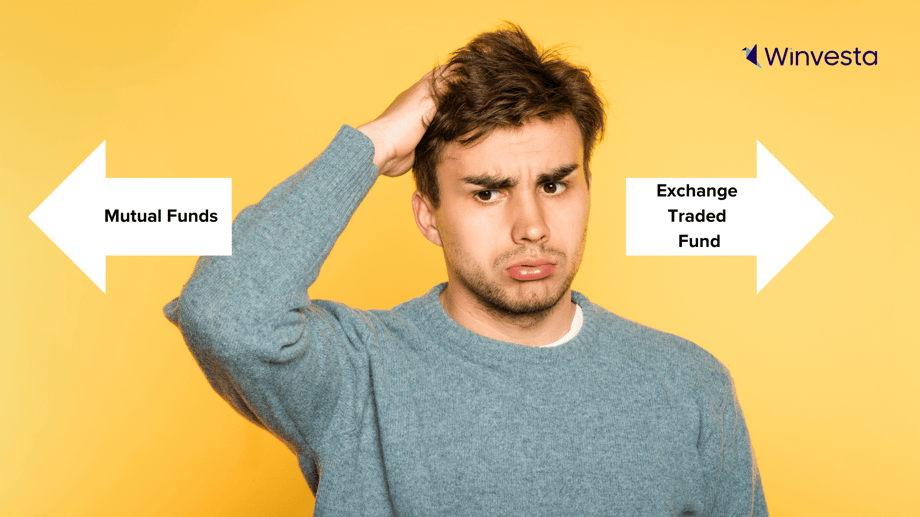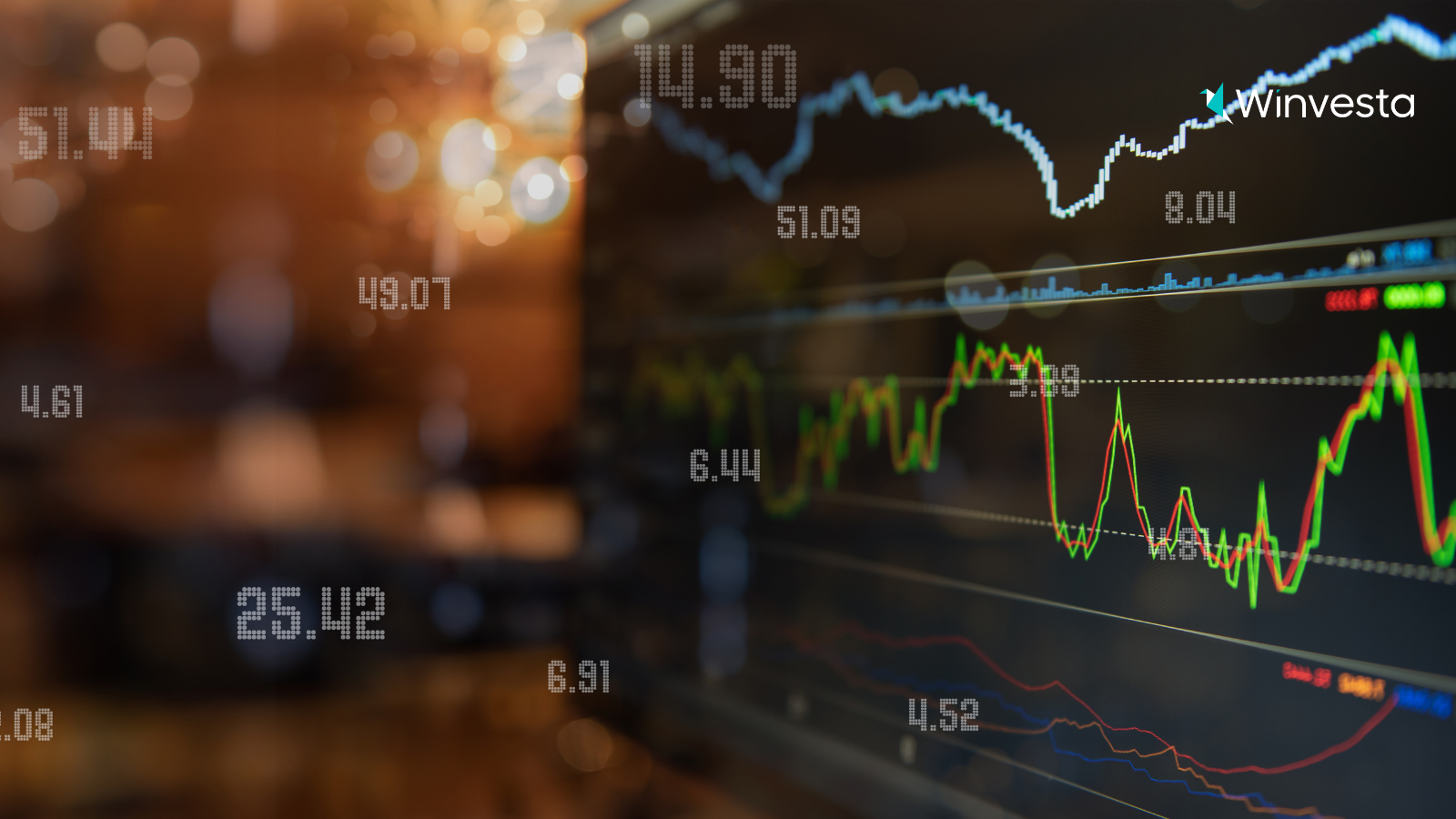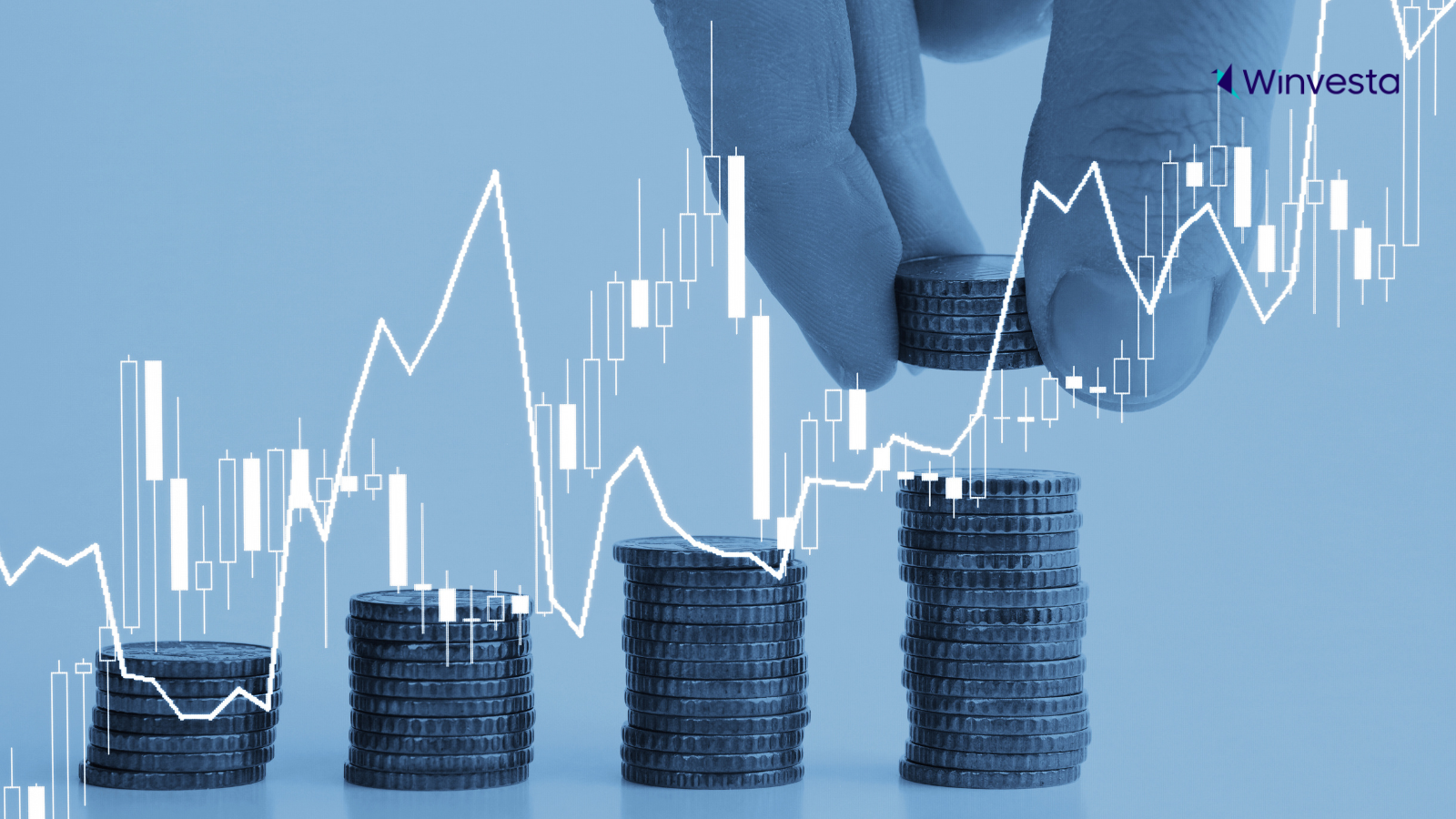Contents
ETF vs Mutual Fund: Which investment is right for you?
6 minutes read
30 April 2025

Investing in the financial markets can be complex, with various options available to individuals seeking to grow their wealth. Two popular investment vehicles that often come up in discussions are ETFs and mutual funds. Understanding the difference between ETF and mutual fund options is crucial for making informed investment decisions.
This comprehensive guide will explore the key aspects of ETFs and mutual funds, including their structure, trading mechanisms, and cost considerations. We'll examine how these investment products differ in terms of liquidity, management styles, and tax efficiency. By the end, readers will have a clear understanding of the pros and cons of each option, helping them choose the best fit for their investment goals and risk tolerance.
What are ETFs and mutual funds?
What are ETFs?
Exchange-traded funds (ETFs) are like baskets of investments that you can buy and sell on the stock market, similar to how you would trade individual company stocks. These baskets hold a mix of things like stocks, bonds, or other assets, allowing investors to own a bit of many different investments at once. ETFs give you the flexibility to trade throughout the day, offering easy access to a variety of assets.
Most ETFs follow a specific market index or a certain group of investments, helping you spread your money across a range of assets without having to pick individual stocks. When you buy shares of an ETF, you own a piece of the basket, but not the actual assets inside it.
What are mutual funds?
Mutual funds work by collecting money from many people to invest in a variety of assets, like stocks and bonds. A professional manager handles the investments, making decisions about what to buy and sell based on the fund's goals, such as growth or income.
The value of a mutual fund is determined once a day, based on the total value of everything in the fund. You can buy or sell shares at this daily price, known as the Net Asset Value (NAV). Mutual funds come in different types, including stock-focused funds, bond-focused funds, or mixed funds, to match different risk levels and financial goals.
Brief history and evolution
The first modern-day mutual fund, the Massachusetts Investors Trust, was created in the United States in 1924. ETFs, on the other hand, are relatively new entrants in the investment arena. The first ETF, the SPDR S&P 500 ETF Trust (SPY), debuted in January 1993. This ETF was an immediate success and grew to become the largest ETF in the world.
Since their inception, ETFs have experienced rapid growth and innovation. Initially focused on equity indices, the ETF industry expanded to cover other asset classes such as fixed income, REITs, and commodities. In 2000, the first factor-based ETF was introduced in the US, and ETFs reached Europe. The industry continued to evolve with the introduction of commodity ETFs in 2004, sustainable ETFs in 2005, and active ETFs in 2010.
Both mutual funds and ETFs have become popular investment options, offering investors diversification and professional management. The key difference between ETF and mutual fund structures lies in their trading mechanisms and management styles, which we will explore in the following sections.
Differences at a glance
.png?width=1600&height=900&name=Difference%20Between%20ETF%20and%20Mutual%20Fund%20A%20Comprehensive%20Guide%20(1).png)
Differences in trading and liquidity
How ETFs are traded on exchanges
Think of ETFs like stocks with a twist! You can buy and sell shares of an ETF on the stock exchange all day long, just like you would with your favorite company’s shares. This means you’re not stuck waiting until the market closes – you can trade whenever the price is right. Whether you're in the mood to buy in the morning or sell in the afternoon, ETFs have your back.
One of the coolest perks? Intraday liquidity. It’s a fancy way of saying you can jump in or out of your investments at any point during the trading day. This is perfect for those who love keeping an eye on market moves or making quick decisions based on sudden changes. No need to sit on the sidelines, you’re in the game all day!
Mutual funds trading process
Mutual funds, on the other hand, play by different rules. You can’t buy and sell them like stocks throughout the day. Instead, mutual fund transactions happen just once a day – after the market closes. So, no matter when you place your order, it won’t be finalized until the fund’s Net Asset Value (NAV) is calculated at the end of the day.
This makes mutual funds more of a “set it and forget it” investment. While you may not get the excitement of tracking intraday price changes, mutual funds offer a steady approach. However, keep in mind that some funds come with minimum investment requirements and restrictions that discourage frequent trading – they're built with the long-term investor in mind.
Liquidity comparison
When it comes to liquidity, ETFs take the crown. Because you can trade them throughout the day, ETFs give you flexibility to buy and sell on your terms – at known prices. With the help of market makers, ETFs often maintain tight bid-ask spreads, meaning there’s always someone to buy from or sell to, ensuring smooth transactions. However, if you're trading a less popular ETF, keep an eye out for wider spreads that could affect your trading costs.
Mutual funds, while still considered liquid, aren’t quite as flexible. You’ll only know the exact price of your trade after the market closes and the NAV is calculated. If you’re in no rush and don’t mind waiting until the end of the day to buy or sell, mutual funds could work for you. But if you like the idea of real-time trading and reacting to the market’s moves, ETFs are the better option.
In a nutshell: ETFs give you quick access to your money and the freedom to trade whenever you like, making them a great choice for active traders. Mutual funds, with their end-of-day pricing, are more suited to long-term investors who aren’t too concerned about intraday price shifts.
| Aspect | ETFs | Mutual Funds |
|---|---|---|
| Trading Mechanism | Traded on stock exchanges throughout the day, like stocks. | Transactions occur only once per day after the market closes, based on Net Asset Value (NAV). |
| Liquidity | Higher liquidity, allowing investors to buy and sell throughout the day at known market prices. | Less flexible, transactions are based on end-of-day NAV; investors cannot trade during the day. |
| Intraday Price Movements | Investors can take advantage of intraday price changes, offering more trading opportunities. | Investors cannot capitalize on intraday price changes; trades are executed at the NAV price at the end of the day. |
| Bid-Ask Spreads | Tight bid-ask spreads, maintained by market makers and authorized participants, ensure smooth transactions for popular ETFs. | No bid-ask spread; trades are executed at a single price (NAV) after the market closes. |
| Trading Flexibility | More flexible and suited for active traders who want to react quickly to market changes. | Less flexible; suited for long-term investors who are not concerned with intraday price movements. |
| Trading Costs | Trading costs can increase for less popular ETFs due to wider bid-ask spreads. | Mutual funds may charge additional fees or impose restrictions on frequent trading to protect long-term investors. |
| Liquidity Guarantee | Offers liquidity throughout the day. | Guaranteed liquidity, but only at the end-of-day NAV, which may be sufficient for long-term investors. |
Cost structure and management styles
ETF expense ratios and fees
Exchange-traded funds (ETFs) generally feature lower expense ratios compared to mutual funds. The average expense ratio for index ETFs was 0.16% in 2022, while actively managed ETFs had an average expense ratio of 0.48%. This cost efficiency is primarily due to their passive nature and lower operational expenses.
ETFs keep their administrative and operational costs down through market-based trading. Since ETFs are bought and sold on the open market, the sale of shares from one investor to another does not affect the fund. This mechanism helps reduce paperwork and operational expenses incurred by the fund.
Mutual fund costs and expense ratios
Mutual funds typically have higher expense ratios than ETFs. In 2022, the average expense ratio for actively managed mutual funds was 0.66%. Mutual funds charge their shareholders for various operational costs, including transaction fees, distribution charges, and transfer-agent costs [11].
The expense ratio of a mutual fund includes management fees, 12b-1 fees for marketing and distribution, and other operational expenses. These costs are deducted from the fund's assets daily, impacting the overall returns for investors.
Active vs. passive management approaches
The management style of a fund significantly influences its cost structure and potential returns. Actively managed funds typically have higher expense ratios due to the intensive research, analysis, and trading activities involved in managing the portfolio. These funds aim to outperform their benchmark index through strategic stock selection and market timing.
Passively managed funds, such as index ETFs, generally have lower expense ratios. These funds aim to replicate the performance of a specific benchmark index, requiring less active intervention by fund managers. The simplified investment strategy and limited involvement of fund managers contribute to lower operational and transaction costs.
The difference between ETF and mutual fund management styles is reflected in their expense ratios. Passive ETFs tend to be more cost-efficient and transparent, while active ETFs and mutual funds may have higher management expenses to cover research and trading costs.
Investors should consider the impact of expense ratios on their long-term returns when choosing between ETFs and mutual funds. Even a small difference in expense ratios can significantly affect overall investment performance over time. It's essential to evaluate whether the potential for outperformance in actively managed funds justifies their higher costs compared to passively managed alternatives.
Frequently asked questions on the difference between ETFs and Mutual Funds.

- SBI NIFTY 50 ETF (SETFNIF50),
- Invesco India Gold ETF (IVZINGOLD),
- Kotak Nifty Bank ETF (BANKNIFTY1),
- Nippon India ETF Shariah BeES (SHARIABEEE),
- SBI 10 YEAR GILT ETF (SETF10GILT),
- Edelweiss ETF - Nifty Bank (EBANK),
- UTI BSE Sensex ETF (SENSEXETF), and
- CPSE ETF (CPSEETF).
Disclaimer: This article is for informational purposes only and is not intended as financial advice. Please consult a financial advisor before making any investment decisions.

Contributed by Swastik Nigam
Our Founder and CEO has been steeped in the world of finance since 2011 working with organisations such as Procter & Gamble, Larson and Toubro and Deustche Bank. Swastik’s love for finance literacy and helping businesses and individuals to make better financial decisions and grow their personal wealth has resulted in many such blog articles, talks, content pieces and social media content. Follow him to learn about the process of building a successful global business and tips on growing your personal wealth.



